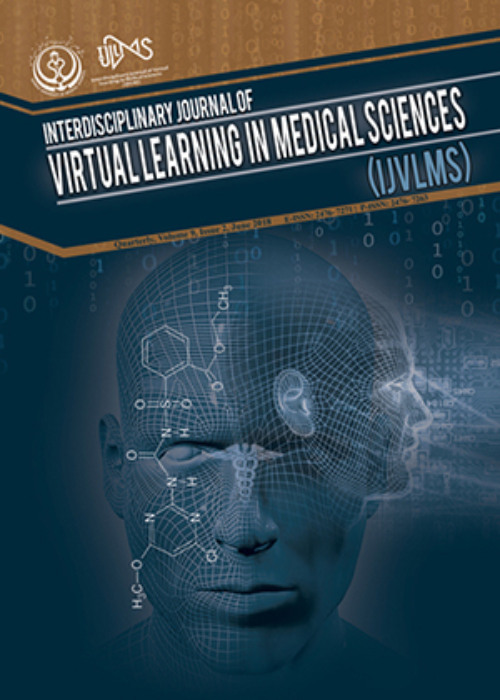The assessing critical thinking in two groups of virtual and traditional education in Shiraz University
Author(s):
Abstract:
Introduction
One of the most important teaching and learning challenges in the 21 st century is how to train individuals to confront the complex and consistently changing society in the age of information. Extensive developments in science and technology along with the rapid discredit of data and findings requires a kind of education in which students are constantly learning and solving problems, and enjoy confronting changes. This study aims to comparatively assess the level of critical thinking in two groups of students; students who use distant education and students who learn traditionallyMaterials and Methods
This study is cross sectional study on two groups, each consisting of 40 final year computer course students, from the Azad Islamic University of Jahrom and the virtual teaching branch of Shiraz University. The collection tool in this study was Watson & Glaizer critical thinking test in two forms of 80 general questions which assesses the following 5 sections: hypothesis recognition, concluding skills, interpretation, explanation, and evaluation skills. Data analysis was done by descriptive statistics such as frequency and percentage, and analytic statistics such as t-test, two ways ANOVA & chi -square with the help of SPSS software.Results
The results showed that most students in the traditional group were 21-22 years old and most of them were female and single. Most of the students had scores between 35-38 in the test. The mean difference assessment of data by t-test showed that score in virtual group is higher than the traditional group and the mean test score showed a significant relationship between scores in the critical thinking test and group teaching.Virtual students were stronger in recognition of pre-assumptions and evaluation and Azad University students were stronger in recognition of pre-assumptions and concluding. but the total score in virtual students was higher than traditional student (p<0.05).Conclusion
considering the critical thinking improvement in virtual teaching and its many advantages such as self esteem, self efficacy and independent learning, we suggest the use of virtual teaching beside traditional teaching, or the replacement of this teaching instead of theoretical courses in future.Language:
Persian
Published:
Interdisciplinary Journal of Virtual Learning in Medical Sciences, Volume:1 Issue: 3, 2011
Page:
16
magiran.com/p1009746
دانلود و مطالعه متن این مقاله با یکی از روشهای زیر امکان پذیر است:
اشتراک شخصی
با عضویت و پرداخت آنلاین حق اشتراک یکساله به مبلغ 1,390,000ريال میتوانید 70 عنوان مطلب دانلود کنید!
اشتراک سازمانی
به کتابخانه دانشگاه یا محل کار خود پیشنهاد کنید تا اشتراک سازمانی این پایگاه را برای دسترسی نامحدود همه کاربران به متن مطالب تهیه نمایند!
توجه!
- حق عضویت دریافتی صرف حمایت از نشریات عضو و نگهداری، تکمیل و توسعه مگیران میشود.
- پرداخت حق اشتراک و دانلود مقالات اجازه بازنشر آن در سایر رسانههای چاپی و دیجیتال را به کاربر نمیدهد.
In order to view content subscription is required
Personal subscription
Subscribe magiran.com for 70 € euros via PayPal and download 70 articles during a year.
Organization subscription
Please contact us to subscribe your university or library for unlimited access!


